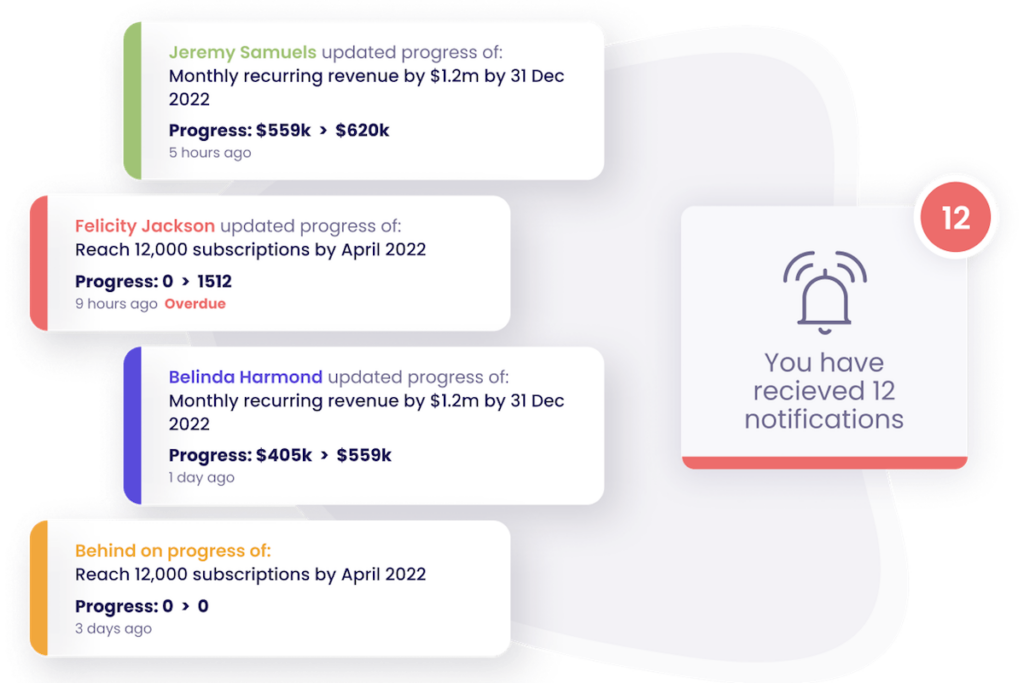Are you a small business owner looking to up your game? Strategy planning is key to achieving success and growth, but it can be daunting. You may be feeling overwhelmed at the thought of creating a plan, but with the right resources and guidance, you’ll be well on your way to success. This blog post will provide you with an overview of strategic planning and the steps you need to take to create an effective plan for your small business. So, if you’re ready to take your business to the next level, read on to learn how to plan a killer business strategy without losing your mind!
What is the Definition of Business Strategy?
A business strategy is a plan of action designed to achieve a specific goal or set of goals. It outlines the steps a company should take to ensure its long-term success and profitability. A well-defined strategy should include objectives, tactics, and benchmarks for measuring progress. It should also be tailored to a company’s particular industry, competitive landscape, and internal capabilities. An effective business strategy can help a company remain competitive in its market and gain a competitive edge.
The Difference Between a Strategy and a Plan
When it comes to planning your business, the terms “strategy” and “plan” are often used interchangeably, but they are not the same. A plan is a set of specific steps you need to take in order to reach a goal. It’s more detailed than a strategy and should include information such as timelines, budgets, resources, and processes.
On the other hand, a strategy is a broader concept that involves understanding where you are now, where you want to go, and how you will get there. It requires a bit more thought and creativity than a plan. Strategies can involve various aspects of your business, from finance to marketing, as well as goals and objectives.
The key difference between a plan and a strategy is that a plan is focused on what needs to be done today, while a strategy is focused on how you want your business to look in the future. A plan is concrete and tangible, while a strategy is more abstract and based on long-term goals.
When it comes to planning your business, it’s important to create both a plan and a strategy. The plan should include the details of the steps you need to take in order to reach your goals, while the strategy will provide the bigger picture and guide you on what actions to take next. This will give you the guidance you need to make informed decisions and stay focused on the end goal.
Define What You Want to Achieve
When you start planning a strategy for your small business, it’s important to take the time to determine what you want to accomplish. To do this, you must be clear on what success looks like and the steps needed to get there.
Start by asking yourself questions such as: What is the purpose of my business? What do I want to achieve in the short term and long term? Who is my target audience? What do I need to do to reach them? What kind of resources will I need to make this happen?
Answering these questions will help you create a mission statement and vision for your business that can act as the foundation for all of your future decisions. Knowing the end goal will also help you develop an action plan that focuses on specific tasks and activities that need to be completed to make progress.
Once you have a good idea of what you want to accomplish, you can begin to break down the bigger picture into more manageable chunks so you can start working towards it. With a clear understanding of your desired outcome, you are well on your way to creating a successful strategy for your small business.
Do Your Research
No business strategy plan is complete without a thorough research phase. This is where you’ll investigate industry trends, your competitors, customer needs and preferences, and more. Here’s what you need to do:
- Understand Your Industry: Research the industry your business operates in and learn about any changes or trends that are impacting it. Consider how the industry has changed in recent years and what the forecast is for the future.
- Know Your Competitors: Investigate what your competitors are doing and how they’re positioning themselves in the market. Identify their strengths and weaknesses, and look for ways you can differentiate yourself from them.
- Analyze Your Audience: Learn about your target audience and identify their needs and preferences. Use customer surveys or market research to get valuable insights that can help inform your strategy.
- Review Your Performance: Look back at your own performance over the past year or two to identify any patterns or trends in your success (or failure). Consider how well your current strategies are working and if there are areas you can improve upon.
By doing your research, you’ll gain an in-depth understanding of the environment you’re operating in and the factors that may impact your strategy going forward. Make sure you set aside enough time to do this step properly, as it will provide a valuable foundation for the rest of your plan.
Set Realistic Goals
Setting realistic goals is an essential part of any strategic planning process. When you set goals that are too ambitious, you risk setting yourself up for failure. On the other hand, if your goals are too conservative, you’re unlikely to realize your true potential.
Start by assessing what you want to achieve and how long it’s likely to take. Consider both short-term and long-term objectives, and make sure that each goal has a timeline and is measurable. You’ll also want to create a mix of challenging but achievable goals.
It’s important to remember that planning isn’t a one-time event—your goals and plans should be revisited on a regular basis to ensure they remain relevant. Every decision you make should be linked back to your overall strategy and goal. This means that once you’ve set realistic goals, you need to track progress and adjust them as needed.
Finally, make sure you have the resources available to reach your goals. This includes financial resources, human capital, materials, and facilities. Establishing the right resources for your strategy will help ensure your success.
Create a Timeline
Creating a timeline for your business strategy is crucial to ensuring that you stay on track with your plan. A timeline will help you prioritize tasks, measure progress, and identify opportunities for growth and improvement. To create an effective timeline, start by establishing a timeline goal. This could be a short-term or long-term goal you’d like to achieve within a specific time frame.
Once you have determined your timeline goal, break the goal down into smaller goals or milestones. For example, if your goal is to launch a new product, list all the tasks that need to be completed before it can launch. These tasks may include things like market research, product development, testing, and marketing.
Next, assign deadlines for each of these tasks. When setting deadlines, make sure they are realistic and achievable. If you set too tight of a timeline, you risk not having enough time to complete all the necessary tasks. It’s also important to consider how much time you realistically have to dedicate to working on the project. Finally, don’t forget to build in some flexibility. You may need to adjust your timeline as new tasks arise or unforeseen circumstances delay certain tasks.
By creating an effective timeline for your business strategy, you can ensure that you stay on track with your plan. A timeline will also help you measure progress and identify any opportunities for improvement or growth. With a clear timeline in place, you can focus on achieving your goals and growing your small business.
Delegate and Build a Team
When it comes to implementing a successful business strategy, it is important to delegate tasks and build a team. It is impossible for one person to do everything, so it is vital to get the right people in place who can help execute the plan.
Start by defining the roles that need to be filled. Think about what tasks you need help with, what expertise you require, and how many people you need on the team. Once you have a clearer idea of who you need to bring in, start looking for the right people who can help move your business strategy forward.
You can hire people with the skills and experience necessary to help implement your business strategy. You may also want to consider outsourcing certain parts of the strategy to external contractors. This will save you time and money, as you won’t need to go through the recruitment process or incur costs associated with hiring full-time employees.
No matter how you decide to delegate tasks and build your team, make sure that everyone is clear on their roles and responsibilities. Set expectations and goals, and make sure everyone knows what needs to be done and when. Working together as a team will make it much easier to execute your business strategy.
Stay Flexible
As you’re planning your business strategy, it’s important to remember that things can always change. Markets, customers, and trends are constantly shifting, so you’ll need to stay flexible and be willing to adjust your plan as needed. This doesn’t mean you should ditch all of the hard work you’ve put into creating a strategy, but it does mean you should be open to making adjustments along the way.
To remain agile and responsive to changes in your environment, try breaking down your strategy into smaller chunks. This will make it easier to adjust quickly and react swiftly when something unexpected comes up. Additionally, make sure you have the right processes and tools in place to measure the success of each component of your strategy and make changes as needed.
Finally, stay in touch with your team and encourage everyone to voice their opinion throughout the process. This will help ensure that everyone is on the same page and that any changes you make are well-informed and purposeful. With an open dialogue between everyone involved, you’ll be able to remain flexible and pivot quickly if necessary.
The Cascade Four-Step Strategy Planning Process
Plan: The first step in the strategic planning process is to define what you want to achieve. Start by considering your current position and making a plan of how you’d like to move forward. Consider the resources available to you, including time and budget constraints, and create goals and timelines that are realistic and achievable. Cascade is an easy-to-use platform that can help teams move towards a vision in one place. It enables users to quickly create plans with clear direction while also helping them collaborate with other teams to build multiple interconnected plans.
Execute: Once you have a plan in place, it’s time to start taking action. Cascade helps you connect plans to on-the-ground execution, enabling you to prioritize what matters most. You can assign tasks, track the progress and successes of strategic initiatives in real-time, and get up-to-date status reports on all your projects.
Measure: As you start executing your plan, it’s important to track the progress and success rates of different initiatives in order to understand what is working and what is not. Cascade allows you to track performance metrics, identify risks in the plan, and adjust plans accordingly as needed.
Adapt: As the business landscape changes, so must the strategy. With Cascade, it’s easy to adapt to changing priorities and adjust plans as needed. Cascade makes it simple to create reports on the health of the strategy, allowing teams to quickly identify issues and take corrective action. Additionally, data collected through Cascade can be used to better understand trends in the industry or marketplace, giving businesses insights into how they can stay competitive and drive more value for customers. By leveraging analytics, teams can quickly adjust their strategy and optimize performance outcomes.
Finally, Cascade gives team members visibility into the bigger picture, helping them stay connected to overall goals and strategies, even when dealing with daily tasks. Taking advantage of these features provides a great opportunity for businesses to stay agile and make timely decisions when it comes to driving their overall strategy. With this type of structure in place, businesses will be able to stay ahead of their competition and maintain a successful edge for years to come.
Apply to Our Small Biz Growth Accelerator
Having a plan and strategy in place is key to success, but sometimes small businesses need a little extra help to get there. That’s why our Small Biz Growth Accelerator program exists. This program is designed to provide small businesses with the resources they need to grow and reach their goals faster. Through the Small Biz Growth Accelerator, you’ll have access to templates, a strategy framework, and networking opportunities.
The Growth Accelerator is open to businesses of all sizes and growth stages; best of all, it’s free. It’s run as a hybrid program in New York City and in select city’s around North America in 2023. We will also launch a 100% online version soon. You can sign up to our mailing list if you don’t see your location or want to be notified of the 100% online class. Applications are accepted on a recurring basis, so you can apply whenever it’s convenient for you. Our program is designed to give you the extra support you need to make your plan a reality faster and more efficiently. So, don’t wait. Apply to our Growth Accelerator today and start turning your strategy into a reality.
Conclusion
Strategy planning can seem daunting and time-consuming, especially for small businesses with limited resources. However, a successful strategic plan is an invaluable asset to any business, as it gives you a road map to achieve your goals. By following the steps outlined in this blog post, you can create a strategic plan that is tailored to your needs and the resources available to you. Developing a strategic plan takes thought and effort, but it is worth it for the clarity it brings to your business and its operations. A strategic plan will help you stay focused and on track to reach your goals. A clear strategy ensures that you and your team are aligned with your company’s overall mission and objectives.








